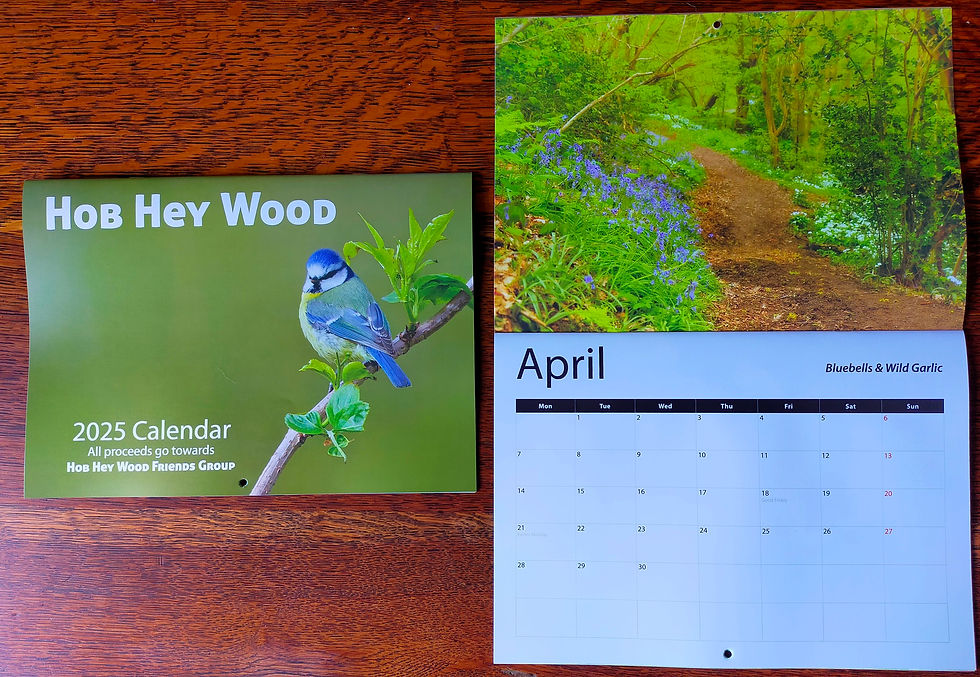The Badger
- Mark O'Sullivan

- Jun 28, 2019
- 3 min read

Hob Hey Wood has a large, thriving population of badgers which are active on any non-freezing night throughout the year. This article gives details about badgers in general and their presence in Hob Hey Wood.
The badger is instantly recognisable with its large, squat hairy grey body, powerful paws and black and white striped face. It is Britain’s largest land carnivore and can grow surprisingly large. A big male can weigh as much as 40 pounds! It is a member of the mustelid family so related to the much smaller stoats and weasels. They were originally known by the Celtic word ‘brock’ which means grey or grizzled.
Badgers live in large underground burrow systems called ‘setts’, as a large family group (typically 4 to 7 individuals). Although nocturnal, evidence that badgers are present is easy to find. The setts have large entrance holes, with freshly excavated earth around them. Nearby will be a latrine; a hole that the badgers poo into. In Hob Hey Wood, setts can be found in several places: the bridle path from Townfield Lane, the bridle path from Bradley Lane, and the area to the south west of the main bridge. Latrines can be found nearby and throughout the wood. You can also often find their footprints in muddy areas. Badgers also use scratching posts so look out for four parallel marks on upright trees or posts.

Badgers are omnivores so will eat pretty much anything. They have a fondness for earthworms, capable of devouring several hundred in a single night, but will also kill and eat hedgehogs! They also eat roots and bulbs and you can often see signs of badgers digging in the wood. They are one of the few animals that give birth in winter. The young are born in January/February, snug underground, emerging at a couple of months old when the weather warms up in Spring.
Badgers have no natural predators and it will surprise no one that the main threat to the animals comes from humans. Many get hit by cars (about 50,000 per year in Britain) and illegal hunting and ‘badger-baiting’ still occurs. Badgers are a known carrier of bovine TB and culling is seen as a method of reducing infection of cattle by badgers. Fortunately, there is no cull being operated in Cheshire so ‘our’ badgers are safe for now. A better method is the vaccination of badgers against bovine TB; this is expensive but much more humane than culling.
Although unlikely to be seen during the day, Hob Hey Wood’s badgers can be encountered if you’re out very late in the evening or early in the morning. A more certain way to see them is to employ a ‘trail cam’. This is an infra-red camera which has a motion sensor to start recording video when something comes into view. I bought one of these last year and everywhere I placed the camera in the wood (putting peanuts out to attract them), I found badgers. Some of the videos can be found on this website in the blog section.

The badger is one of our most recognisable and well-loved animals but it is not universally popular. Some gardens adjacent to Hob Hey Wood get visited by badgers and some make pests of themselves by digging up lawns and flowerbeds and even making a latrine in the garden (not something you want to encounter when pulling up weeds!) Despite this, they are an important part of the natural environment and I feel privileged that we have them in our local wood. Why not go out and see what signs you can see of ‘Brock the badger’?




Comments